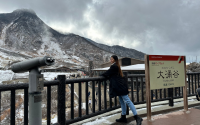Park-hopping in Fukuoka City
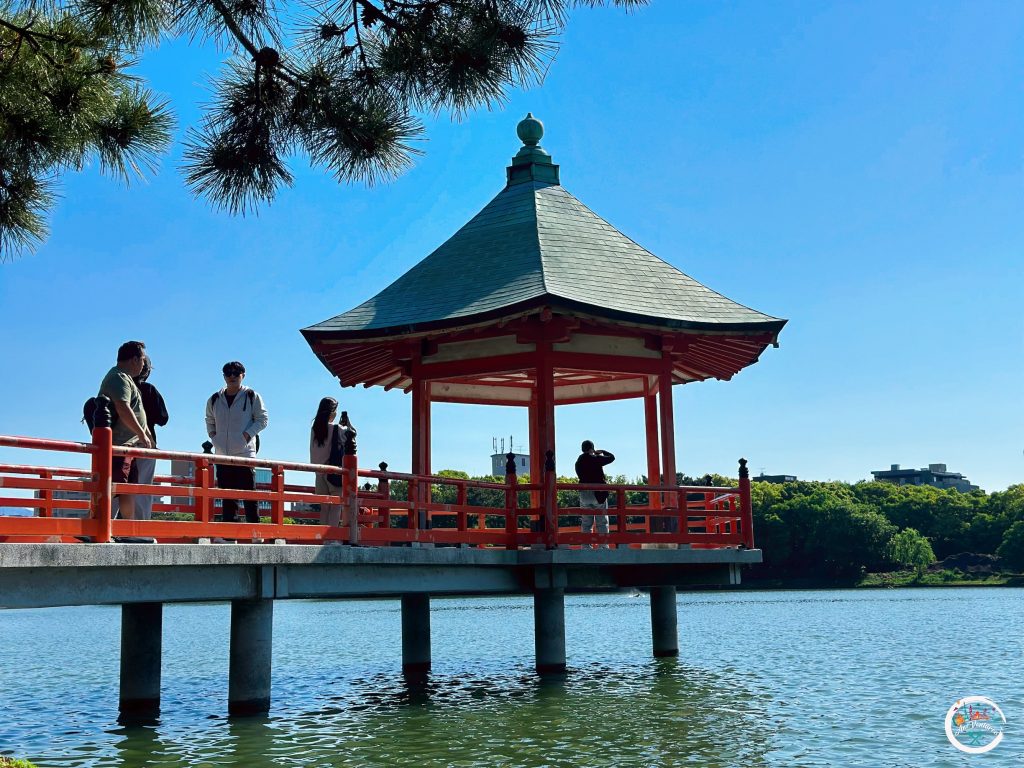
During our nine-day stay in Fukuoka City, I noticed something right away. Unlike Tokyo or Osaka, this prefecture doesn’t have an overwhelming number of tourist attractions. That’s not necessarily a bad thing! It just meant we sometimes had to venture outside the city to explore more scenic areas like Oita and Kumamoto. But since those places are more mountainous, a bit of hiking is usually part of the deal.
In Fukuoka City itself, the must-visit spots are mostly temples, parks, and shopping centers. So on our first day, we decided to stay local and explore what the city had to offer. We ended up doing a relaxed tour of two of its most popular parks: Ohori Park and Maizuru Park.
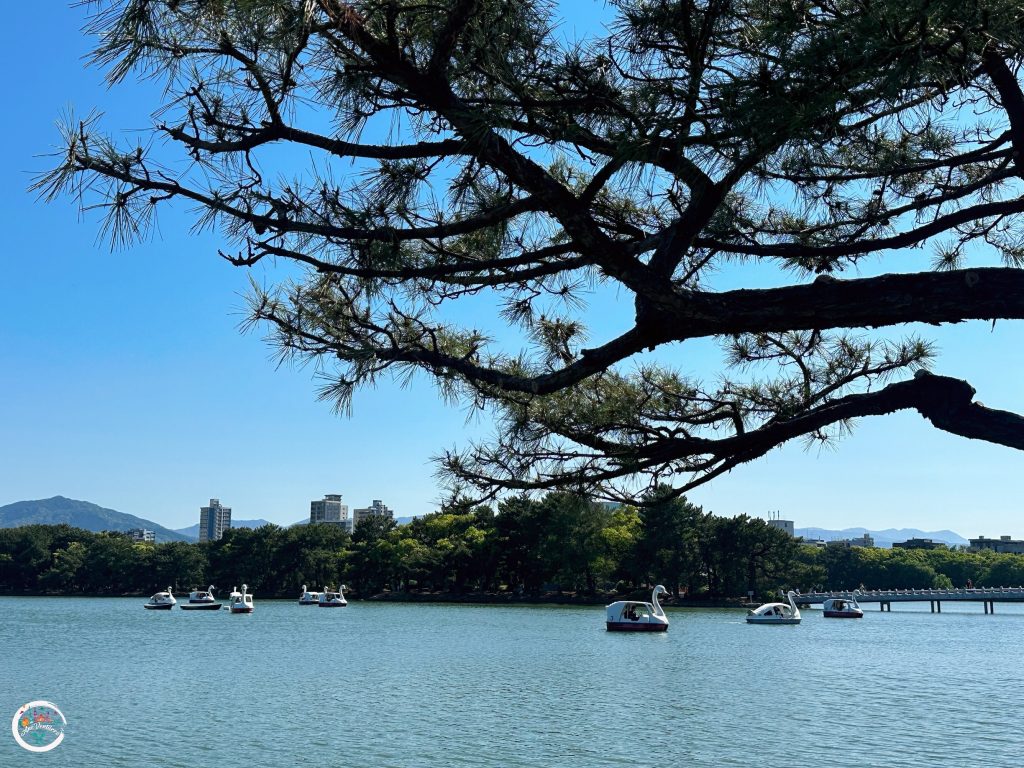
Let’s start with Ohori Park. The name “Ohori” actually means “moat” in Japanese, and it has historical significance. It used to be part of the moat system for nearby Fukuoka Castle. The park was built between 1926 and 1929 and was inspired by the classical garden style of West Lake in China. Its large central pond is its most iconic feature, with three charming islands connected by elegant stone bridges.

It’s a simple and peaceful park. It’s more of a local hangout than a grand tourist attraction. Honestly, our first thought was, “Hey, this kind of feels like Burnham Park in Baguio”, especially with the swan boats for rent! The difference is that everything here looked shiny and clean, including the crystal-clear pond. We didn’t hop on a boat, though. Just sitting on a bench, watching the world go by, was enough for us to relax.
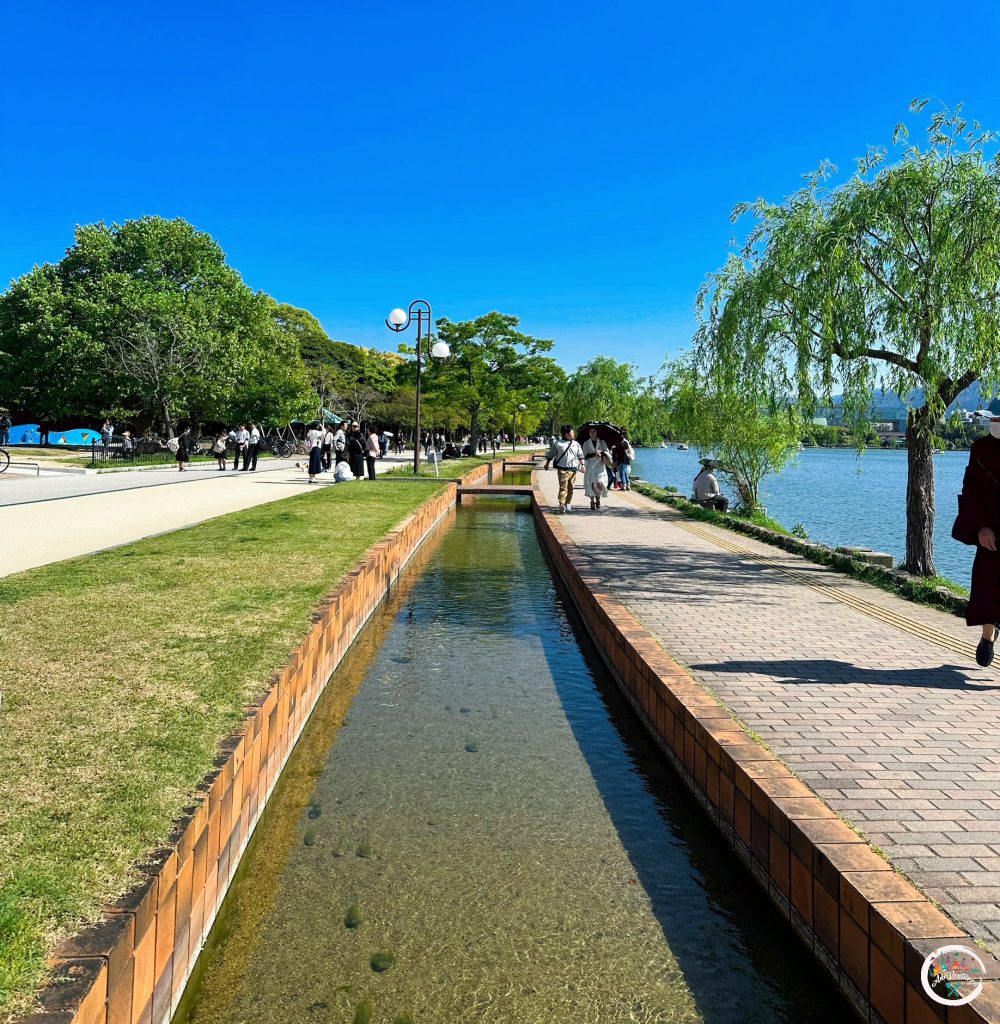
One thing I appreciated about Ohori Park was the well-thought-out walking paths. They’ve designed it to be inclusive for everyone. There are separate lanes for jogging, walking pets, and slow strolls. I saw a few elderly locals and even persons with disabilities enjoying the space. It’s something I wish we had more of back home. There’s also a canal that’s so clean. You’ll spot fish, ducks, and turtles thriving in it.

At the heart of the lake is a vermillion red ukimi pavilion, which has become a symbol of the park. There’s also a well-equipped playground, where adults can leave their kids for a while while visiting other cultural attractions like the Fukuoka Art Museum, the Noh Theater, and a serene Japanese Garden all within the park grounds.

Just a 10-minute walk away is Maizuru Park, which is especially loved for its seasonal flowers. At the Ninomaru Plum Garden, about 270 plum trees bloom beautifully from late January to mid-February. After that, the park becomes a floral haven with cherry blossoms in March, azaleas and tree peonies in April and irises in May. It’s basically a year-round flower showcase right in the middle of the city.

The Maizuru Park is built around the ruins of Fukuoka Castle, which was once the largest castle on Kyushu. The castle was the former base of an influential political leader until the Meiji Era and was later occupied by the American army during World War II, making this a crucial spot in Japanese history. However, it was almost completely torn down after the Meiji Restoration as an unwanted symbol of the feudal past. What’s left are some stone walls and a few turrets.

While it’s technically a historical site, I found it more like a scenic observation deck, especially because of the handy view guide maps posted around. From here, we could spot the previously-mentioned Ohori Park, the Tenjin area, and even the Fukuoka Airport in the distance. The breeze up there was really refreshing, so we just sat down and enjoyed the view for a while.


There isn’t much to see here but we still added it to our itinerary, hoping that we would catch some cherry blossoms in bloom. Sadly, it was all green here. I couldn’t resist pulling a prank on my friends who who didn’t bother climbing up upon realizing there was no cherry blossoms. I sent a photo I had edited with full-bloom sakura, and they rushed up the hill only to find out it was a joke. Sorry, guys!
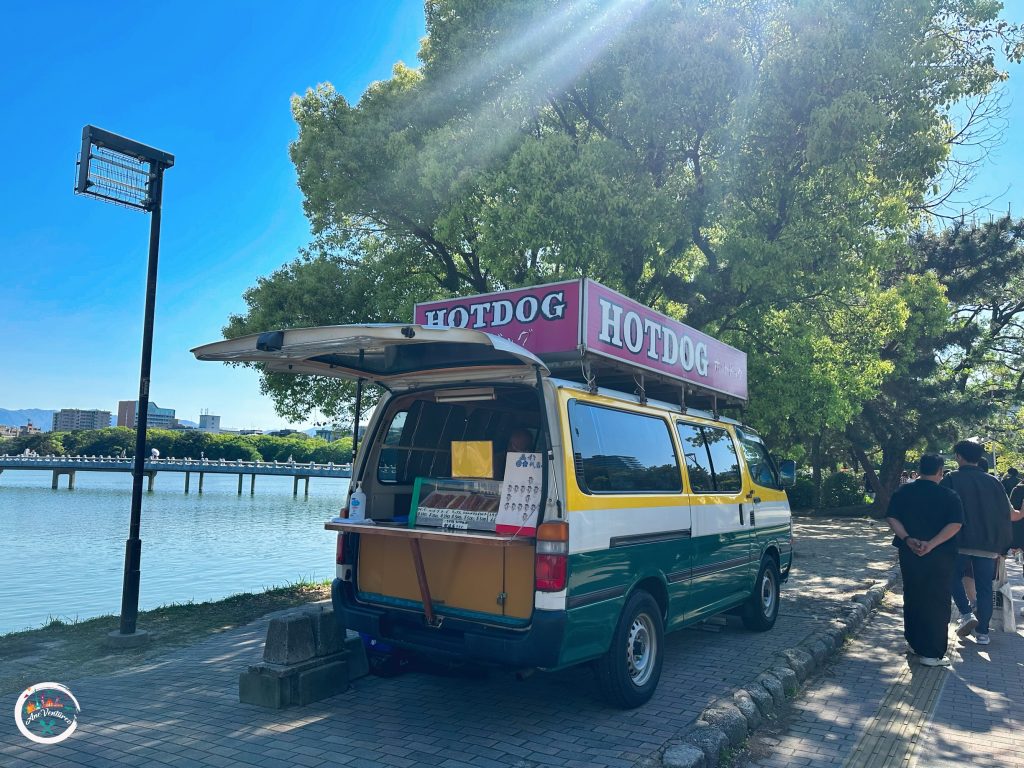
Even though the area isn’t jam-packed with thrilling activities, I personally loved the food scene around the parks. There are cozy cafés, in-store coffee shops, and food vans near the lake. During our visit, we were lucky to catch the Fukuoka Castle Night Market, a 13-day event with food stalls, kitchen cars, and nostalgic festival-style games. It definitely added a lively vibe to the peaceful surroundings.

One snack I have to talk about was the apple pie I got from Oohori Park Shop. I’ve never had an apple pie with so many apple slices packed into it! It almost felt like I was eating just apple and crust but there was also a sweet sauce that tied everything together perfectly. I paired it with a Ginger Pink Lemonade, which was a seasonal drink. The color was lovely, and the sourness was refreshing though I couldn’t really taste any ginger in it.
Fukuoka City’s parks may not be the flashiest tourist spots in Japan, but they offer a peaceful and scenic experience you shouldn’t skip.
More about our Fukuoka 2025 trip:
- Aso Mountain: On Top Of Japan’s Most Active Volcano
- Yufuin Floral Village: The Studio Ghibli Village In Japan
- Momochi Beach: The Jewel Of Fukuoka City’s Coastline
- The Seven Hells Of Beppu
- Nanzoin Temple: The Home Of The Reclining Buddha
- Best Of 7 Eleven
- Best Of Bon Repas
- 洋風食堂枝: A Long-Loved Western-Style Restaurant In Fukuoka City
- Kichigo: A Taste Of Karaage Grand Prix’s Gold
- Ikinari: Ready For Steak Off
- How I Make Melon Ice Cream Soda
- How I Make Peruvian Fries Burger
- How I Make Mackerel Sushi

